Hyenas are badass critters with a distinctive laugh, a mean streak the size of Texas, and a face only a mother could love.
With all that in mind, what could be cooler than having a hyena as a pet?
How about not getting your arm ripped off or your face rearranged so that it resembles a bad Picasso knock-off?
The truth is, hyenas are among the most dangerous exotic pets a person can own. Not only that, they’re extremely difficult to take care of, as well. So for the love of all that’s holy, unless you’re an expert on wild animals and have the means to provide such creatures with all their complex needs, don’t get a hyena.
So what, exactly, makes hyenas bad pets? Let’s find out!
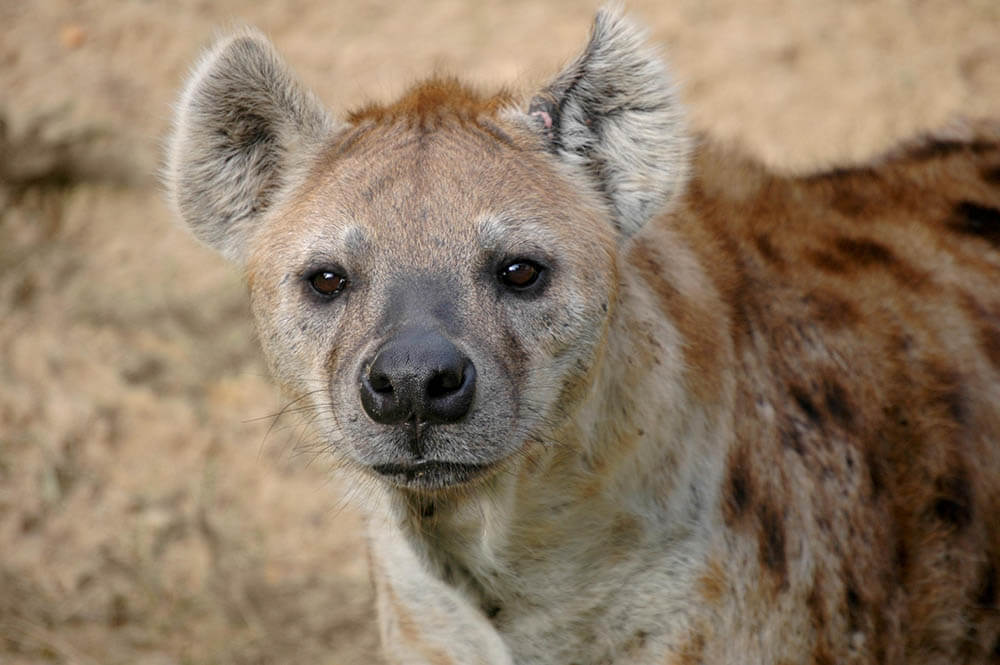
Why Hyenas Make Bad Pets
Let’s discuss the many reasons why it’s a bad idea to keep hyenas as pets!
1. Hyenas are wild animals
Thanks to thousands of years of domestication, dogs are exceptionally friendly toward humans and extremely easy to train.
In contrast, hyenas haven’t been domesticated. At all.
This means hyenas are still very much controlled by their wild instincts, so anyone keeping a pet hyena is under the constant threat of getting bitten and scratched. You can also expect it to ruin your property by destroying furniture, leaving foul-smelling scent marks, and more.
If a hyena feels threatened by you, or if it suspects you intend to harm its cubs, there’s a great risk your next encounter with your wild pet can end in disaster.
2. Hyenas are dangerous predators
Contrary to the common misconception that these creatures are purely carrion-eating scavengers, hyenas are proficient hunters, with 95% of their food coming from kills. In fact, hyenas are among the animal kingdom’s top predators, placing them alongside lions, cheetahs, and leopards when it comes to killing efficiency.
In the wild, hyenas attack creatures such as zebras and antelopes on the regular. They’re even known to kill young lions. And yes, hyenas do attack and eat people, including children and the elderly (though, thankfully, such cases are rare).
There are several reasons hyenas are so dangerous. For one, they have powerful jaws capable of crushing bones and tearing flesh in a single bite. A hyena has a bite force of around 1,100 psi (pounds per square inch), which is stronger than a lion’s (650 psi) or a tiger’s (1,050 psi) and only slightly weaker than a grizzly bear’s (1,160 psi). Can you imagine what that kind of strength can do to your arm, leg, or neck?
On top of that, the hyena’s mouth is filled with bacteria that can cause serious infections in its victims.
These creatures are also exceedingly fast, capable of reaching speeds of 37 miles per hour, so good luck outrunning a hyena that’s intent on tearing you a new one. Also, every hyena is an efficient hunter whether it’s alone or working with a pack.
3. Hyenas are hard to train
Hyenas are intelligent enough that they can be trained and even tamed. However, this is a feat only the best professional animal trainers can accomplish.
Take note that even tamed hyenas remain wild at heart. This means natural urges can override their training, encouraging them to ignore commands and behave in ways that can endanger the humans around them. In short, you can never fully trust a hyena to be a good boy or girl.
The ideal way to tame a hyena is to start training early—when the animal is still a cub. The older the hyena, the more resistant it is to training.
Of the four hyena species, the striped variety is the easiest to tame thanks to its small size. Always keep in mind, however, that it’s impossible to truly domesticate a hyena—you’ll need hundreds, perhaps thousands of years of selective breeding to do that.
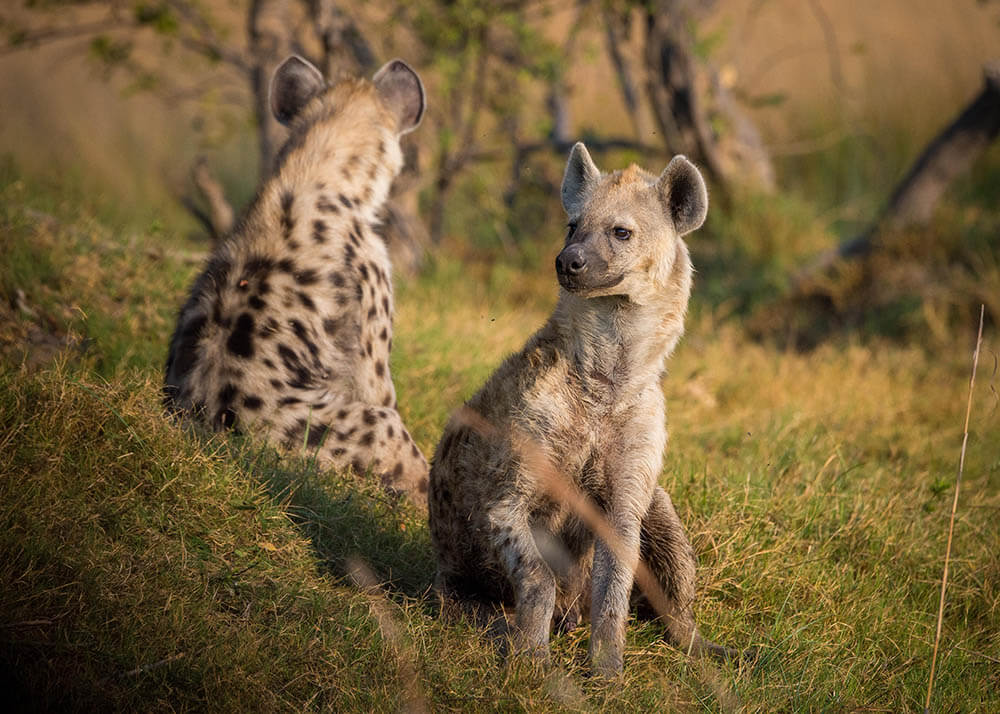
As extremely social animals, hyenas live in groups known as clans, which have social dominance hierarchies. Removing an individual from this environment is unnatural to it. And if a hyena’s social needs aren’t met, it could act out.
One way around this issue is to raise an infant hyena with a group of other animals, such as dogs. This allows all members of the group to develop a social bond, thus fulfilling the hyena’s need for friends, family, and social hierarchy.
5. Hyenas are expensive to keep as pets
Because a hyena’s needs are far more complex than a domesticated animal’s, hyena maintenance is going to cost you extra.
First of all, you’ll need to acquire special licenses and permits, which in itself is a long and costly process. You’ll also need to have a large enclosure built for your savage pet. Remember, hyenas thrive in vast open grasslands; a tiny apartment just won’t do.
Hyenas are voracious creatures, which means you’ll have to purchase plenty of meat regularly. In the wild, the average spotted hyena can eat as much as 32 pounds of meat every meal. In contrast, an 80-pound dog can only eat around 1 pound of meat per day. And because you need that much meat for your hyena, you’re going to have to buy a huge meat freezer to keep all that food fresh.
You’ll also need lots of time and effort to tame your wild pet. This means spending almost every waking hour training your hyena.
Remember, all this trouble is just for one hyena—imagine what having another hyena will cost you. And unless you raise a hyena cub with a family of dogs, you’re going to need to get a second hyena so the first has company.
6. You may not be able to meet all their needs
Pet hyenas need an environment and lifestyle that replicate what it’s like to be in the wild.
Hyenas require a lot of space to run around in, which explains the need for a large enclosure. You’ll have to purchase other exotic critters for them to hunt. Unless you raise a baby hyena with a family of dogs, you’ll have to acquire more hyenas to fulfill the first’s social needs.
Yet, nothing you can give your hyena can replace their natural habitat and way of life. These amazing creatures thrive in packs sometimes consisting of over 100 members. They enjoy running through and exploring enormous grasslands in search of prey. A life of captivity is hardly suited for animals accustomed to so much freedom.
If you insist on owning a hyena, however, it’s best to get a cub, as it’s highly unlikely to miss the home it was taken from.
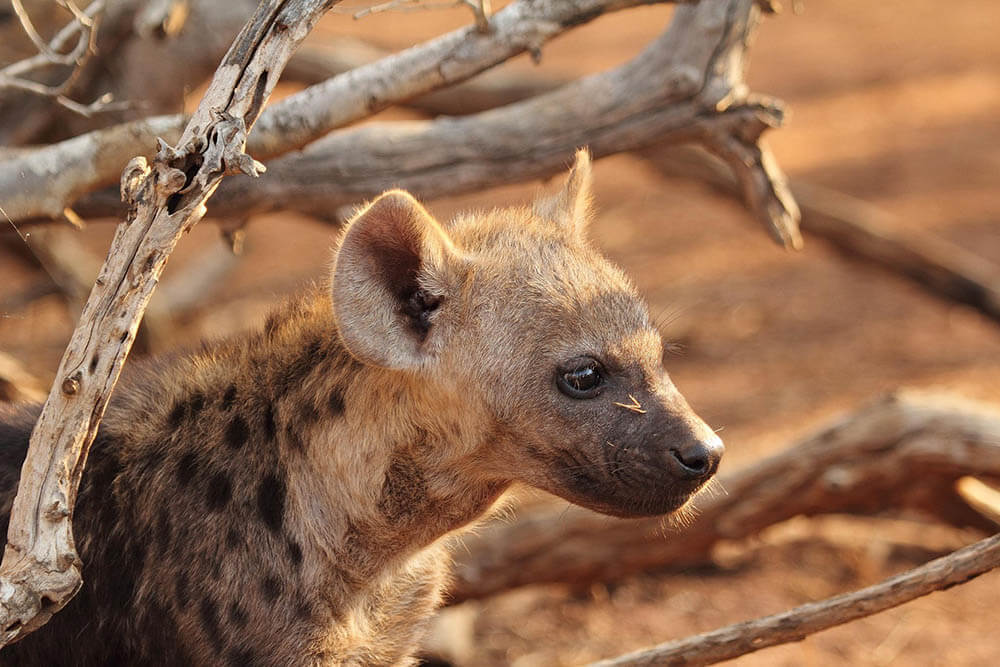
How Do You Survive a Hyena Attack?
You don’t.
Okay, that’s a tad pessimistic. There are actually several things you can do to avoid getting mauled to death by a pet hyena that decides it no longer wants to be your friend.
If the hyena hasn’t attacked yet:
1. Don’t run, as this can trigger the hyena’s instinct to chase and kill you. Instead, back away slowly while keeping your face toward it. Besides, unless you have superpowers, you can’t outrun a hyena.
2. If you’re carrying any food, throw it at the hyena. Start your gradual retreat once the hyena has shown interest in the food.
3. Do your best not to show any fear. A hyena will perceive fear as weakness, which may embolden it to attack.
4. It’s best to be prepared to defend yourself, so find something you can use as a weapon, such as a rock, stick, or broom. The longer the weapon, the better; you don’t want the hyena to get close enough to sink its teeth into you.
5. Pray.
If the hyena attacks:
1. Use your weapon to attack the hyena, focusing your strikes on its head. There’s a chance this will scare it off.
2. If you’re fortunate enough to have other people with you, attack the hyena as a group (don’t forget to use weapons). A hyena is more likely to back off if it’s facing more than one opponent. Take note, however, that this will endanger those other people.
3. If there’s a tree nearby and you’re quick, you can try climbing the tree. Unlike cats, hyenas don’t have retractable claws, restricting their ability to climb trees. You can also scurry up anything that’ll give you a height advantage over the hyena.
If the hyena manages to bite you:
1. Hope for a miracle. There’s a teensy-weensy chance the hyena will let go of dinner (i.e. you) and withdraw.
2. Scream for help. This will alert any people nearby and (hopefully) stir them into action.
3. Keep attacking the hyena’s head. If you injure it enough, the hyena may decide you’re not worth the trouble and release you.
If you survive the attack, know that death is a real possibility. In addition to the ravaged flesh, pulverized bones, and severe blood loss, you’ll have to contend with shock, infection, and the humiliation of getting murdered by the animal everyone told you not to keep as a pet. Get your butt to a hospital as quickly as you can—your life depends on it.
Of course, the best way to survive a hyena attack is not to have a pet hyena in the first place.
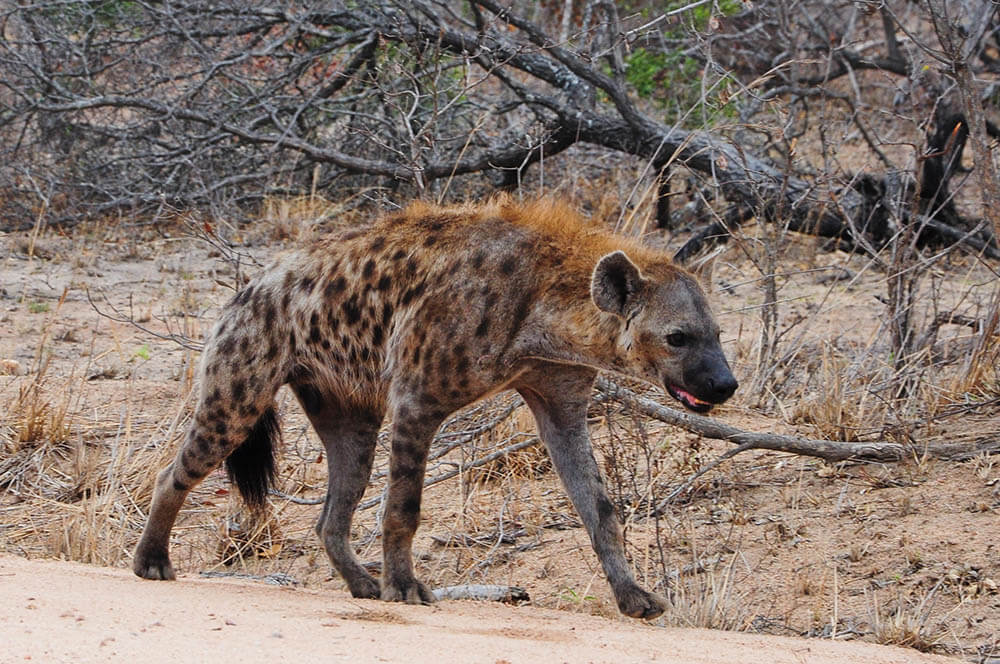
FAQs About Hyenas
Let’s answer more questions about hyenas as pets!
Is it legal to own a hyena?
In the US, the only states where hyena ownership is legal are Alabama, Arkansas, Nevada, North Carolina, Oklahoma, South Carolina, and Wisconsin. You’ll need to acquire special licenses, permits, and insurance before you can keep a pet hyena. You’ll also need to prove that you have sufficient space (i.e. a giant enclosure) for the animal.
Are hyenas dogs or cats?
Neither. Hyenas are unique mammals with their own family: Hyaenidae.
Can hyenas interbreed with dogs or cats?
No. Hyenas aren’t the same species as canines or felines, so they can’t interbreed with them. We’re sorry if that throws a wrench into your plan to create a weird Labrador Retriever/spotted hyena hybrid!
How many hyena species are there?
The four hyena species are spotted hyenas, striped hyenas, brown hyenas, and aardwolves.
Can hyenas live with other pets?
In the wild, hyenas see most animals outside of their pack as either food or threats. Therefore, unless the hyena is exceptionally well-trained, it’s unlikely it can coexist peacefully with domestic pets such as dogs, cats, hamsters, and birds.
To ensure the safety of your domestic pets, it’s best to raise a hyena cub around them so that the cub can get used to these other animals and eventually see them as its pack. The downside to this is that once that hyena is grown, it may still attack animals outside of said pack. It also won’t eradicate the hyena’s instinct to dominate weaker critters, which can make it behave aggressively toward members of its own pack.
Are hyenas good with children?
NO. Keep your children as far away as possible from dangerous wild animals such as hyenas. There are records of hyenas attacking, killing, and eating not only children but also full-grown people. Even the most well-trained hyena can’t be completely trusted with children.
What are hyena cubs like?
During the first months of their life, a hyena cub raised in captivity is as playful as a canine puppy. It’ll be friendly toward humans and other pets, whom it’ll eventually accept as its pack. It’s also relaxed when its needs are met.
As the cub grows older, however, it’ll start dominating the weaker animals in its adopted pack. You can therefore expect increased aggression as the cub grows older. Without extensive training, it can become a significant threat to any human or creature around it.
What are hyena adults like?
Adult hyenas tend to show lots of aggression in their attempts to dominate their pack. If one feels you’re competing against it for dominance, it could direct its violent behavior toward you.
Females are not only larger than males but also far more aggressive (hyena packs are matriarchies). They’re especially dangerous when they have cubs to protect.
How much does a hyena cub cost?
A hyena cub costs between $900 and $8,000. Take note that this amount doesn’t include all the other expenses owning a hyena entails.
What are good alternatives to a pet hyena?
Get a dog.
More specifically, get an active, high-energy dog, such as a Siberian Husky, Golden Retriever, or American Foxhound.
If your goal is to impress (or intimidate) your neighbors, get a massive, ferocious-looking dog, such as a Tibetan Mastiff, German Shepherd, or Rottweiler.
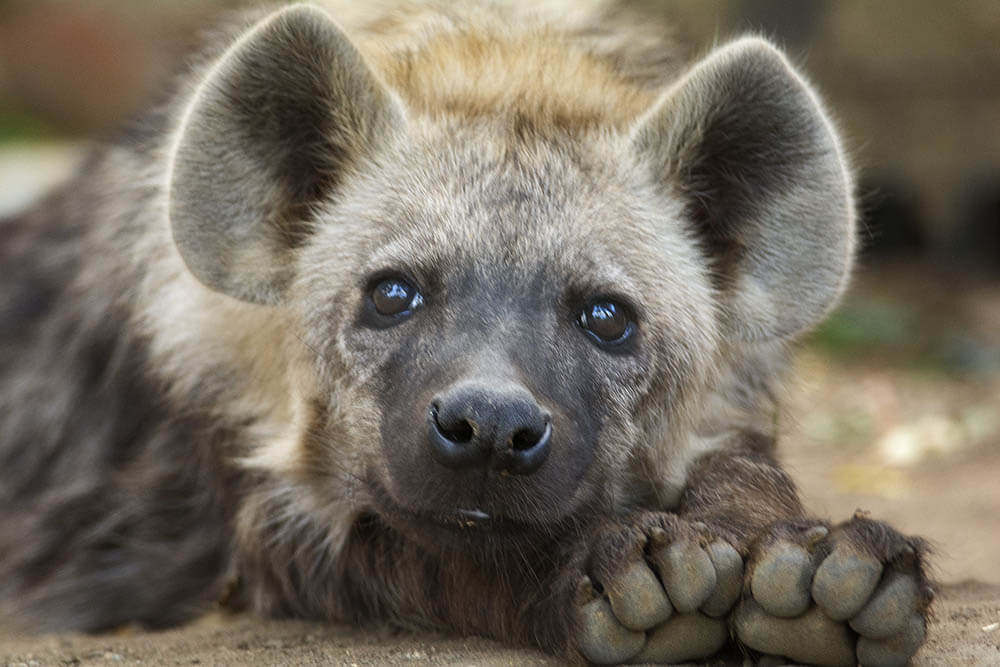
Conclusion
We don’t recommend getting a hyena as a pet. Yes, hyenas can be trained to be less dangerous. However, the process of taming a hyena is long, arduous, and expensive—not to mention it doesn’t completely stamp out the creature’s natural tendencies toward violence.
At the end of the day, hyenas are wild animals that are best left in the wild. Keeping one in captivity will expose you and your loved ones to danger as well as make your hyena miserable, which is likely to encourage it to act more aggressively. If you want a large, powerful animal as a companion, you’re better off getting a fearsome-looking dog.
